<< Our Photo Pages >> Pillar of Eliseg - Early Christian Sculptured Stone in Wales in Denbighshire
Submitted by Andy B on Friday, 02 December 2011 Page Views: 18688
Early Medieval (Dark Age)Site Name: Pillar of Eliseg Alternative Name: LLantysilio-yn-ial, Eliseg's PillarCountry: Wales
NOTE: This site is 1.367 km away from the location you searched for.
County: Denbighshire Type: Early Christian Sculptured Stone
Nearest Town: Llangollen Nearest Village: Pentrefelin
Map Ref: SJ20264452 Landranger Map Number: 117
Latitude: 52.992052N Longitude: 3.189411W
Condition:
| 5 | Perfect |
| 4 | Almost Perfect |
| 3 | Reasonable but with some damage |
| 2 | Ruined but still recognisable as an ancient site |
| 1 | Pretty much destroyed, possibly visible as crop marks |
| 0 | No data. |
| -1 | Completely destroyed |
| 5 | Superb |
| 4 | Good |
| 3 | Ordinary |
| 2 | Not Good |
| 1 | Awful |
| 0 | No data. |
| 5 | Can be driven to, probably with disabled access |
| 4 | Short walk on a footpath |
| 3 | Requiring a bit more of a walk |
| 2 | A long walk |
| 1 | In the middle of nowhere, a nightmare to find |
| 0 | No data. |
| 5 | co-ordinates taken by GPS or official recorded co-ordinates |
| 4 | co-ordinates scaled from a detailed map |
| 3 | co-ordinates scaled from a bad map |
| 2 | co-ordinates of the nearest village |
| 1 | co-ordinates of the nearest town |
| 0 | no data |
Internal Links:
External Links:
I have visited· I would like to visit
cactus_chris visited on 21st Apr 2018 - their rating: Cond: 4 Amb: 4 Access: 4 In what could be a very muddy farmers field.
SandyG have visited here
The Pillar of Eliseg near Valle Crucis Abbey (SJ 203445). The last king of Powys had this stone erected before he died in 854. The long and now very faint inscription gives his descent from Vortigern (see Dinas Emrys).
For more information see Coflein NPRN 165274.
Note: A lecture on the Pillar of Eliseg by Professor Nancy Edwards on December 7th in Anglesey. Also other museum talks in various locations throughout December, see our Latest section and see our page for events at Stonehege and Avebury.
You may be viewing yesterday's version of this page. To see the most up to date information please register for a free account.
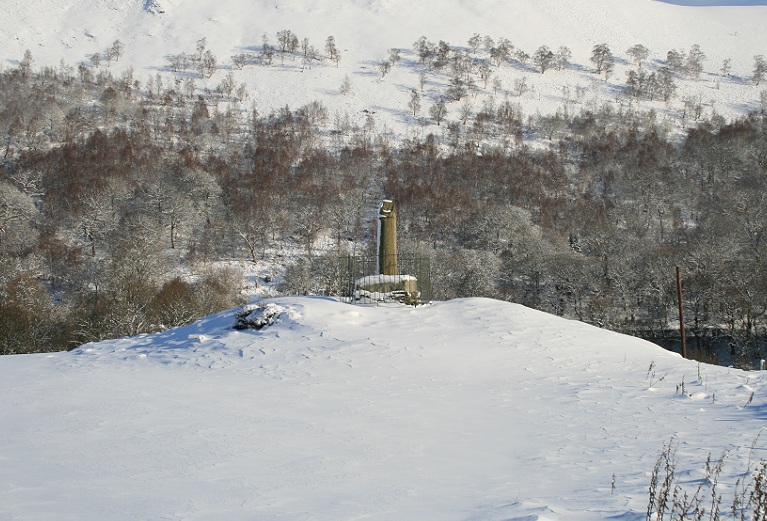
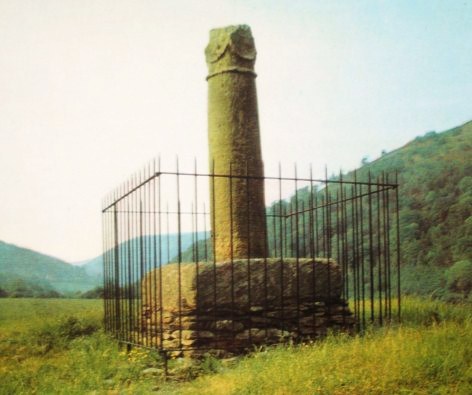
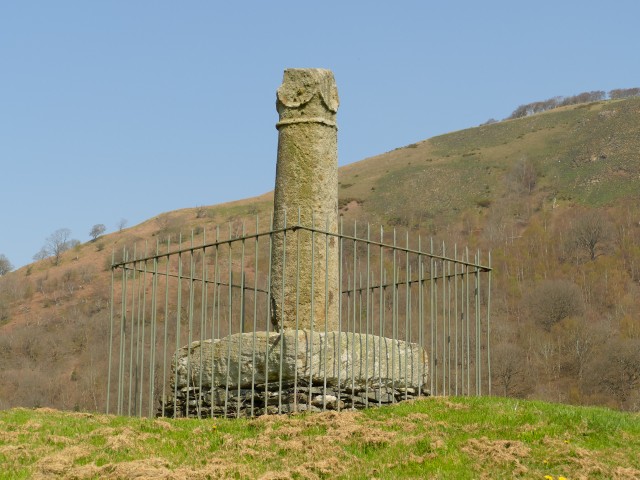
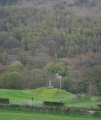
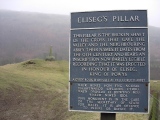


Do not use the above information on other web sites or publications without permission of the contributor.
Click here to see more info for this site
Nearby sites
Key: Red: member's photo, Blue: 3rd party photo, Yellow: other image, Green: no photo - please go there and take one, Grey: site destroyed
Download sites to:
KML (Google Earth)
GPX (GPS waypoints)
CSV (Garmin/Navman)
CSV (Excel)
To unlock full downloads you need to sign up as a Contributory Member. Otherwise downloads are limited to 50 sites.
Turn off the page maps and other distractions
Nearby sites listing. In the following links * = Image available
2.0km ENE 77° Creigiau Eglwyseg 1* Round Barrow(s) (SJ22214495)
2.1km E 91° Eglwyseg Plantation Barrow* Round Barrow(s) (SJ22364446)
2.3km E 83° Eglwyseg Stone* Natural Stone / Erratic / Other Natural Feature (SJ22574478)
2.5km SE 126° Dinas Bran* Hillfort (SJ2224043060)
2.5km ENE 76° Eglwyseg Kerb Cairn A* Cairn (SJ22704509)
2.5km ENE 76° Eglwyseg Kerb Cairn B* Cairn (SJ227451)
2.5km E 80° Eglwyseg stone (2)* Standing Stone (Menhir) (SJ22774494)
2.6km ENE 76° Eglwyseg Cairn Circle* Cairn (SJ22824513)
2.7km SSE 153° Llangollen Museum Museum (SJ2145642103)
2.8km ENE 74° Creigiau Eglwyseg Boundary* Cairn (SJ22944522)
2.8km ENE 75° Eglwyseg Mountain* Standing Stone (Menhir) (SJ22994519)
2.8km E 99° Eglwyseg Plantation Cairn 1* Cairn (SJ23074403)
3.1km E 96° Eglwyseg Plantation Cairn 2 Cairn (SJ23344414)
3.2km ESE 104° Bryngolen Cairn 1* Cairn (SJ23374372)
3.2km ENE 62° Eglwyseg mountain cairns (1,2 and 3)* Cairn (SJ23154597)
3.2km SSE 151° Plas Newydd Gorsedd Stone circle* Modern Stone Circle etc (SJ2181041661)
3.3km NW 306° Moel Gamelin* Cairn (SJ17624651)
3.5km ESE 102° Brygolen Cairn 2 Cairn (SJ23664376)
3.6km NNW 347° St Collen's Well* Holy Well or Sacred Spring (SJ195480)
3.6km S 190° Ffynnon Las Round Barrow(s) (SJ19574099)
3.6km E 101° Brygolen Cairn 3* Cairn (SJ23794378)
4.0km WNW 296° Moel-y-Gaer (Llangollen)* Hillfort (SJ16704636)
4.4km N 6° Cryn-y-Brain* Cairn (SJ20814888)
4.5km SSW 207° Blaen Nant* Round Barrow(s) (SJ18144051)
5.0km SSW 213° Nant-Y-Bache Round Barrow(s) (SJ17474031)
View more nearby sites and additional images





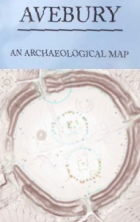
 We would like to know more about this location. Please feel free to add a brief description and any relevant information in your own language.
We would like to know more about this location. Please feel free to add a brief description and any relevant information in your own language. Wir möchten mehr über diese Stätte erfahren. Bitte zögern Sie nicht, eine kurze Beschreibung und relevante Informationen in Deutsch hinzuzufügen.
Wir möchten mehr über diese Stätte erfahren. Bitte zögern Sie nicht, eine kurze Beschreibung und relevante Informationen in Deutsch hinzuzufügen. Nous aimerions en savoir encore un peu sur les lieux. S'il vous plaît n'hesitez pas à ajouter une courte description et tous les renseignements pertinents dans votre propre langue.
Nous aimerions en savoir encore un peu sur les lieux. S'il vous plaît n'hesitez pas à ajouter une courte description et tous les renseignements pertinents dans votre propre langue. Quisieramos informarnos un poco más de las lugares. No dude en añadir una breve descripción y otros datos relevantes en su propio idioma.
Quisieramos informarnos un poco más de las lugares. No dude en añadir una breve descripción y otros datos relevantes en su propio idioma.